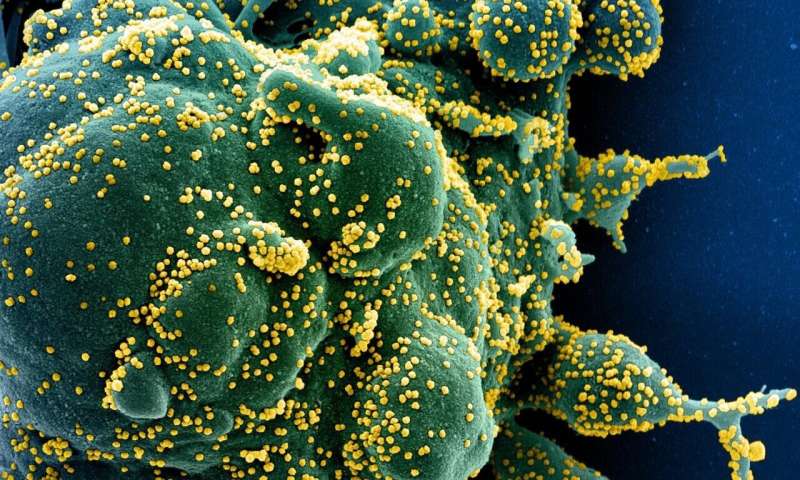Observed COVID-19 variability may have underlying molecular sources

People have different susceptibilities to SARS-CoV-2, the virus behind the COVID-19 pandemic, and develop varying degrees of fever, fatigue, and breathing problems—common symptoms of the illness. What might explain this variation?
Scientists at the University of California, Riverside, and University of Southern California may have an answer to this mystery.
In a paper published in Informatics in Medicine Unlocked, the researchers show for the first time that the observed COVID-19 variability may have underlying molecular sources. The finding could help in the development of effective prophylactic and therapeutic strategies against the disease.
"Based on biomarkers and molecular profiles of individuals, one would hope to develop better medical tests to accommodate these variations in monitoring virus transmission and disease pathology, which helps guide mitigation and treatment options," said Sika Zheng, an associate professor of biomedical sciences at the UC Riverside School of Medicine, who led the study.
The SARS-CoV-2 virus hijacks human host molecules for fusion and virus replication, attacking human cellular functions. These human host molecules are collectively called SARS-CoV-2 host genes. The researchers systematically analyzed SARS-CoV-2 host gene expression, their variations, and age- and sex-dependency in the human population using large-scale genomics, transcriptomics, and proteomics.
They first found similarity of host gene expression is generally correlated with tissue vulnerability to SARS-CoV-2 infection. Among the six most variably expressed genes in the population they identified ACE2, CLEC4G, and CLEC4M, which are known to interact with the spike protein of SARS-CoV-2. Higher expression of these genes likely increases the possibility of being infected and of developing severe symptoms. Other variable genes include SLC27A2 and PKP2, both known to inhibit virus replication; and PTGS2, which mediates fever response. The authors also identified genetic variants linked to variable expression of these genes.
According to the Zheng, the expression profiles of these marker genes may help better categorize risk groups.
"More comprehensive risk assessment can better guide the early stage of vaccine distribution," he said. "Tests can also be developed to include these molecular markers to better monitor disease progression. They can also be used to stratify patients to assess and ultimately enhance treatment effectiveness."
In addition to identifying the most variable SARS-CoV-2 host genes, results from the study suggest genetic and multiple biological factors underlie the population variation in SARS-CoV-2 infection and symptom severity.
"Of course, these will need confirmation with more data. But the results indicate a potential value of a large scale eQTL project to profile genotypes and transcriptome of COVID-19 patients," Zheng said.
Next, the researchers plan to further analyze large scale genotypes and transcriptome data of COVID-19 patients when made available and to refine the results for higher association and accuracy.
More information: Liang Chen et al, Understand variability of COVID-19 through population and tissue variations in expression of SARS-CoV-2 host genes, Informatics in Medicine Unlocked (2020). DOI: 10.1016/j.imu.2020.100443


















